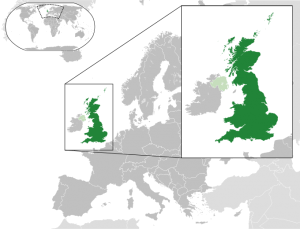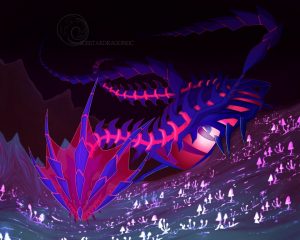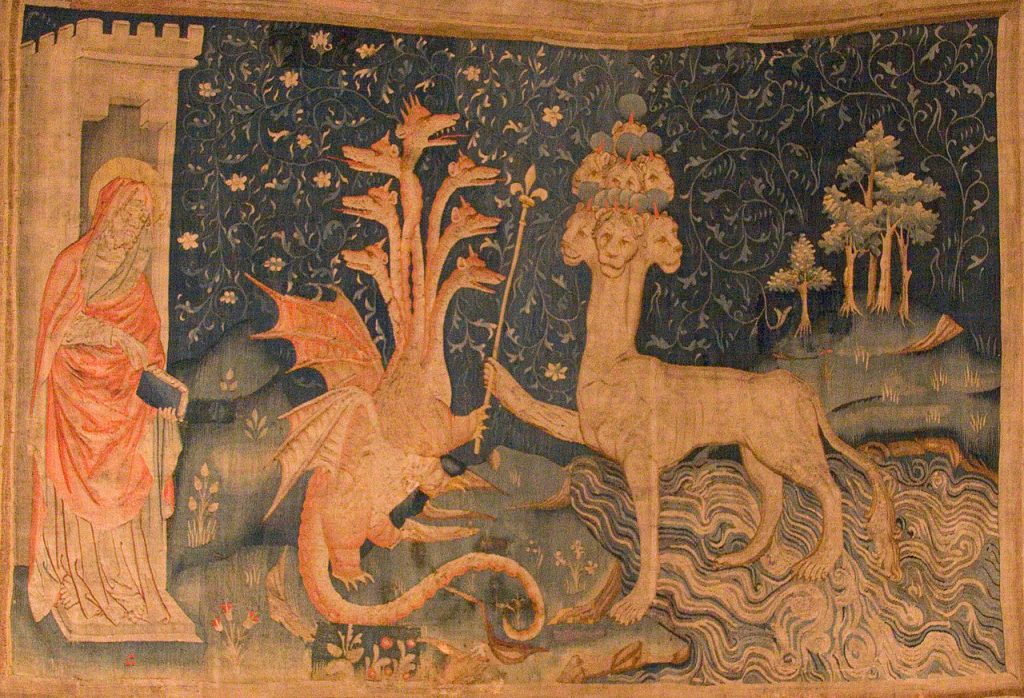Galar Legends and Real-World Myths
The Pokémon Sword and Shield Legendaries officially entered Pokélore less than three months ago. What real-world myths may have inspired their creation?
Please note that this article contains spoilers for Pokémon Sword and Shield, which may include its post-game content.
Did real-world myths and legends provide inspiration for the legendary Pokémon that are native to the Galar region?
Every region in the Pokémon universe since Kanto in Generation I has had references to real-world areas, and fans have loved theorizing about connections between these Pokémon and mythological monsters. The new Galar region is based on Great Britain, which has a treasure trove of myths and legends. We will focus on some of the legendary Pokémon in Galar (Zacian, Zamazenta, and Eternatus) to explore their possible connections to some real-world myths.
Legends of Great Britain

To examine the connection between myths to legendary Pokémon, we must consider what legends Great Britain has.
Great Britain is located in northwestern Europe, close to the coasts of France and Norway. This area was settled by Britons and Celts over 2000 years ago. It has seen many invaders since then, such as Romans, Norse, Saxons, and other Europeans. Both the proximity to different lands and constant invasions have influenced the myths and legends. It is not difficult to find shared elements between legends of Great Britain and the legends across Europe. This means if there is inspiration for Galar legendaries in the myths of Great Britain, we may find similar references shared in other European countries also.
Zacian & Zamazenta

Zacian and Zamazenta were covered earlier during the pre-release period in another Daily article (see: What the new Sword and Shield Pokémon are based on by bobandbill) but deserve a second look here. Zacian and Zamazenta look like large wolves and switch from a “Hero of Many Battles” to a “Crowned Sword” form or “Crowned Shield” form, respectively. These Pokémon can also learn their own unique moves (Behemoth Blade for Zacian and Behemoth Bash for Zamazenta) that are more effective against Dynamax and Gigantamax Pokémon. Additionally, Pokédex entries in the Pokémon Sword and Shield games state these legendary wolves are either siblings or rivals, and they are referred to as “Fairy King’s Sword” and “Fighting Master’s Shield”.
People have speculated that these Pokémon connect to the legends of King Arthur. Zacian may be based on the Lady of the Lake giving the magical sword Excalibur to King Arthur, known in Welsh folklore for killing giants. Zamazenta could be based on the Knights of the Round Table, responsible for ensuring the peace of King Arthur’s kingdom, or based on the lesser known shield of Arthur, Pridwen or Wynebgwrthucher (the name changes depending on the story).
Others have speculated that Zacian and Zamazenta are a reference to Geri and Freki, two wolves said to accompany the god Odin in Norse mythology. A pair of wolves also commonly appear on the thrones of Anglo-Saxon kings, which would also connect the “two kings” in Galar to Zacian and Zamazenta.

There is another connection that could exist, this time to another part of Welsh mythology. Annwn was the “otherworld” in Welsh myth, and appeared in the earliest prose stories in the literature of Britain: the Four Branches of the Mabinogi. Kings of Annwn had spectral hunting hounds called “Cŵn Annwn” (‘hounds of Annwn’).
Zacian’s Crowned Sword form, called the “Fairy King’s Sword” may draw inspiration from Arawn, a king of Annwn. Arawn owned Cŵn Annwn, and was known in later myths as Gwyn ap Nudd, the ‘underworld king’ and ‘king of the fairy folk’ . The “Fighting Master’s Shield” title for Zamazenta’s Crowned Shield form can be connected to either Pwyll or Hafgan. In the Four Branches of the Mabinogi, Arawn was offended by Pwyll, the prince of Dyfed, and forced him to trade places with him for a year and a day. Before the year was done, Pwyll had to defeat Hafgan, another king of Annwn and Arawn’s rival. Pwyll dealt Hafgan an almost-fatal blow in combat that broke through his shield and armor. After this, Pwyll was declared an honorary noble of Annwn.
Eternatus

In Pokémon Sword and Shield, Eternatus is a dual Poison/Dragon-type Pokémon. Eternatus is an extraterrestrial Pokémon that came to Earth inside a meteor around 20,000 years ago. It is the tallest known Pokémon to ever exist. In its base form, its overall body shape resembles the skeletal remains of a dragon, with the rib cage shaped like a cannon. The core in its chest absorbs energy that emanates from the lands of the Galar region. In its Eternamax form, it resembles a spiral galaxy and its shining red core is now protected by ten spikes. There is also a large arm extending from underneath with a glowing red hand and five fingers at the end.
Eternatus may be based on many accounts of mythological or legendary monsters.
Its coming from space and dragon-like appearance may be a reference to King Uther Pendragon, Arthur’s father. He acquired his epithet and started using dragons on his standards after witnessing a dragon-shaped comet.
Another possible source is the poisonous dragon killed by Saint George, England’s patron saint.
It may also be based on the monsters in the epic poem Beowulf. The hero King Beowulf killed two giants and a poisonous dragon in his lifetime.
Eternatus’ skeletal-like ridges and glowing core may have been inspired by the medieval Welsh poem Cad Goddeu. In it, a “mottled ridged serpent, with a thousand souls, by their sins, tortured in the holds of its flesh” appears that is native to Annwn.
Its Eternamax form may be based on the biblical Seven Headed Dragon in the New Testament Book of Revelation that throws one-third of all stars down to earth and is ultimately banished to earth with the Nephilim, the Hebrew giants, an event that ultimately leads to the end of time. This account may also be the origin of the item Wishing Star and the Darkest Day. The Eternamax form’s spikes surrounding its shining red core may also refer to the Ten Horned Beast, also from Revelation.

Closing Remarks
The three new Legendary Pokémon in Generation VIII appear to draw inspiration from many real-world legendary monsters. Not only do they seem to be based on monsters native to the British Isles, but also Norse and even Hebrew monsters! It may be that Zacian, Zamazenta, and Eternatus all draw inspiration from even more real-world legends. Only time will tell if we see any more Pokélore that delves further into these Galar Legends!
What do you make of these potential explanations, and which legendary Pokémon do you like the most? What, if any, myths and legends may be used for other legendaries that could eventually appear in Galar? Let us know your thoughts in the comments!
Edited by bobandbill, ddrox13, and ranko.
